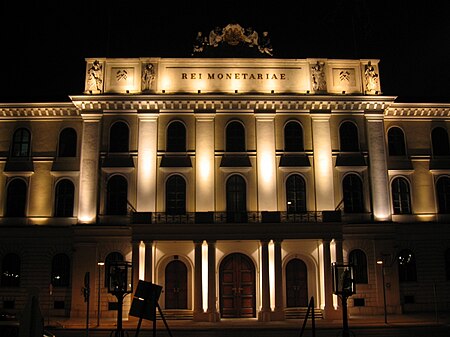Austrian Mint

The Austrian Mint (German: Münze Österreich) is located in Vienna and is responsible for minting Austrian coins. Since 1989 it has been a public limited company (Aktiengesellschaft) and a subsidiary of Austria's central bank Oesterreichische Nationalbank, which also has its headquarters in Vienna. The Austrian Mint carries out both the design and stamping of the coins it produces. Until 2002 it was only responsible for minting the coins of the Austrian schilling; since then it has been responsible for producing the Austrian euro coins. The mint also produces other coins, such as gold bullion coins, as well as commemorative issues: the Vienna Philharmonic coins and the Maria Theresa thaler are produced by the Austrian mint, for example. The mint also supplies circulation coins and blanks to many other countries across the world.
Excerpt from the Wikipedia article Austrian Mint (License: CC BY-SA 3.0, Authors, Images).Austrian Mint
Am Heumarkt, Vienna KG Landstraße (Landstraße)
Geographical coordinates (GPS) Address Phone number Website External links Nearby Places Show on map
Geographical coordinates (GPS)
| Latitude | Longitude |
|---|---|
| N 48.203611111111 ° | E 16.382777777778 ° |
Address
Münze Österreich
Am Heumarkt 1
1030 Vienna, KG Landstraße (Landstraße)
Austria
Open on Google Maps











